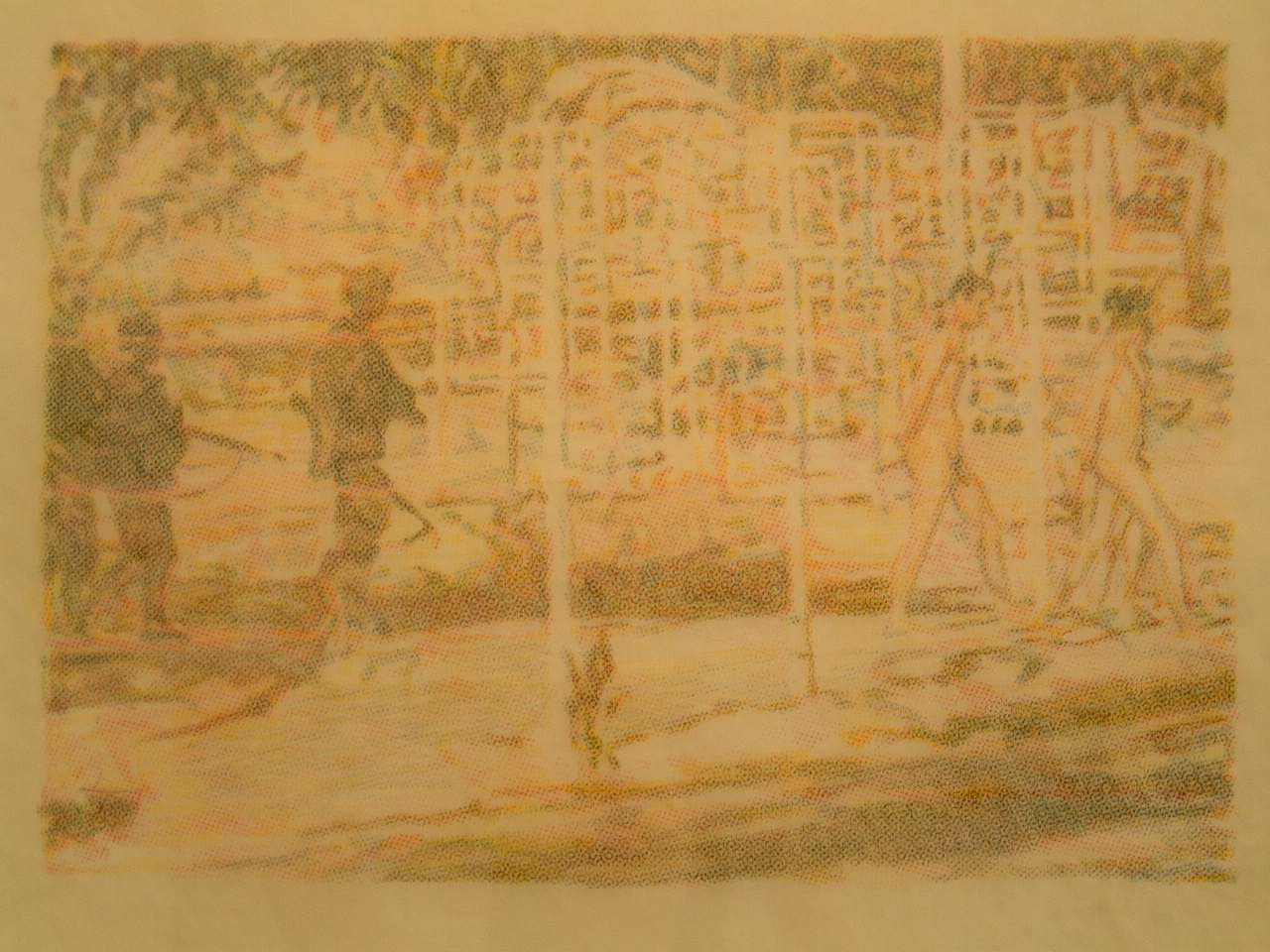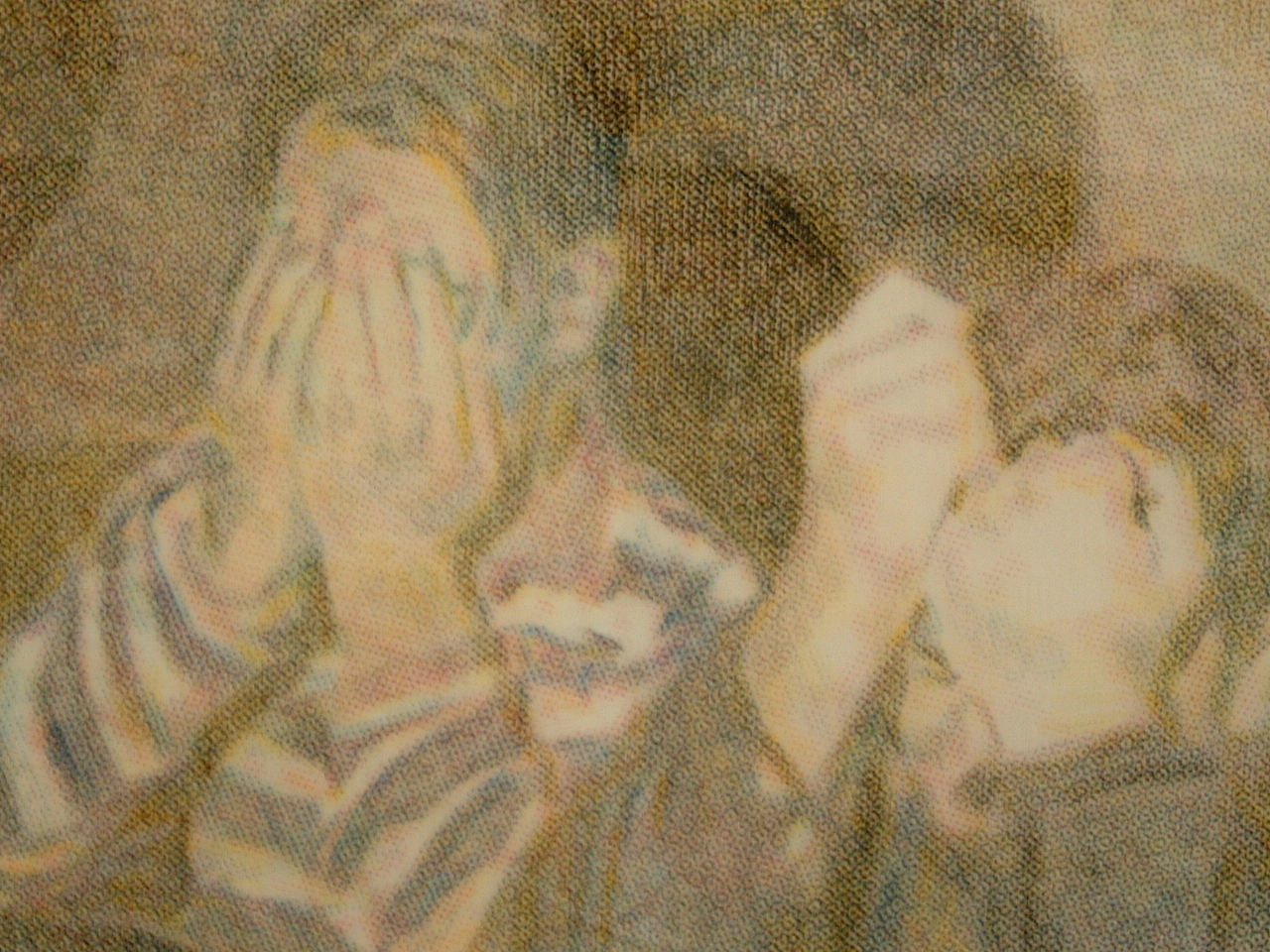Stephen Andrews
Curated by Atom Egoyan
September 9th – October 16th, 2004
Opening Reception: Thursday, September 9th, 6-8p
Stephen Andrews was born in 1956 in Sarnia, Ontario Canada. He has exhibited his work in Canada, the U.S., Brazil, Scotland, France, India and Japan. He is represented in the collection of the National Gallery of Canada, as well as many private collections. His work deals with memory, identity, the body and the body politic.
Atom Egoyan has directed films, which include Calendar, Exotica, The Sweet Hereafter and his most recent work Ararat. He has won numerous prizes at international film festivals including the Grand Prix and International Critics Awards from the Cannes Film Festival and two Academy Award® nominations. His films have been presented in major retrospectives around the world and a number of books have been written about his work. Egoyan's installations have been exhibited at museums and galleries in Canada and abroad, including the Venice Biennale.
Egoyan was President of the Jury at the 2003 Berlin International Film Festival. His production of Wagner's Die Walküre was performed by the Canadian Opera Company in April, 2004 and will be remounted in Autumn, 2006. Egoyan is currently working on a new film project.
ARTIST'S STATEMENT
I have always been fascinated by technology because it can never do what the hand can do, which is to fail miserably. The machine can draw a perfectly straight line - the hand refuses. Technology thus becomes a prosthesis for our shortcomings. When I in turn render by hand what the machine has wrought, my intention is to decipher the medium's message.
My previous body of work was entitled "The 1st part of the 2nd half". It was concerned with depicting the passing of time, using the motif of cinema. Oversized strips of film were created by hand, by pasting up photo sequences frame by frame or by drawing directly onto transparent Mylar. When hung in a row, they resemble short ends in an editor's trim bin. The conceit was to allow the viewer to play the role of editor, splicing together a narrative in their heads, making their own sense of these segmented zooms, dissolves and fades.
Simultaneously, I was working on a series of paintings; poster-sized blowups of still frames from my 'film'. These mimic the 4-color separation process, painting by hand the dot matrix found in color reproduction.
When motion is teased apart into its component pictures, the precise moment that something occurs is determined. For me, these frozen moments strive to capture that instant when everything changes irrevocably. It is in this moment, when we act or fail to act, that our nature is revealed. Searching through footage, we look for forensic evidence, proof of the unbelievable. The photojournalist traffics in this aura of authenticity, this establishment of the exact moment between the 'before' and the 'after'. It is here that I find the inspiration for the current work.
Like everyone, I have been both fascinated and horrified by the news coverage of the war in Iraq. In early 2003, I started searching the internet for photographic evidence of the war that was not being reported in the mainstream press. Web-based news sites offered a rather different picture. Photos of 'collateral damage' captured the obscenity of war in all its pornographic detail. In the wake of Abu Ghraib, these images are now ubiquitous. Like all pornographic and violent pictures, they tap into something instinctual, eliciting some gesture in response.
Like my paintings, the drawings re-create the look of four-color reproduction using a homemade separation technique. They are done as rubbings using window screening and crayons. The process softens the colors to a pastel palette, reminiscent of children's book illustration. The contrast of the war imagery with the pastel color scheme brings to mind the moral tales of the Brothers Grimm. Gruesome lessons in a candy coating.
Websites, like newspapers and magazines before them, deliver us the world in a neat four-color package. By directing our gaze to the dots that make up the pictures, I hope to interrogate the technological interface that delivers the message, to reveal through formal means the role that technology plays in constructing meaning. In the process of re-creating these digital images by hand, I want to explore the inevitable tension between my subjectivity (the hand of the artist) and these objectified digital 'moments'.
CURATOR'S STATEMENT
by Atom Egoyan
Stephen Andrews' art is transitional. While it exists in real time, and employs a masterful control of a variety of media, it is painfully aware of the process of erosion. Erosion and evolution are at the heart of this artist's extraordinary work.
I first met Stephen Andrews almost twenty years ago, and felt an immediate affinity with his sensibility. His lyrical approach to mortality was extremely seductive to me. His outstanding repertoire of techniques never seemed to distract from the extremely intimate feelings his art aroused. While much of the work seemed to address the fleeting nature of life, the art itself was unforgettable.
In one of his most resonant works, FACSIMILE, Andrews selected 146 photos from the obituary section of a gay newspaper at the height of the AIDS epidemic. He then copied these images onto an encaustic material, making a series of gouges onto the dark tablets. The resulting effect, which often looked like a poorly transmitted FAX, communicated the idea of transmission; the transmission of blood, the transmission of information, the transmission of memory. The most haunting aspect of this monumental piece was how it traced the erosion and evolution of personal identity from an anonymous mediated source.
Andrews is obsessed with how we differentiate ourselves in a crowd, how we can recognize and cherish the precious nature of a single life. This deep concern has produced a particularly resonant set of drawings for the present exhibition. The disturbing confluence of war crimes with modern communications has produced a shocking gallery of public images over the past year. Whether the pictures from Abu Ghraib prison were recorded as grisly souvenirs or as tools to prepare the detainees for interrogation, they are heartbreakingly dehumanizing. Hands over faces, bags over heads, each image confronts the erasure of individual spirit to the sadistically staged ritual of extreme humiliation.
Erosion and evolution. By breaking these photographs down - as the subjects have been so effectively brutalized - Andrews aims to dignify these disposable pictures with his painstaking artistry. A random news clip played on a television newscast several months ago becomes the subject of intense scrutiny as it is re-animated and brought back to life. A moment of random death is given consideration through the human act of retouching.
Andrews transforms horror into a moving image.
View CATALOGUE




